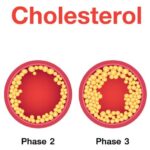Walking? Why should I?
Online shopping, food delivery service, drive throughs, in an era where sedentary lifestyle is the order of the day, finding time for physical activity can be a challenge. For many, the daily commute could offer a convenient opportunity to incorporate exercise into their routine. Walking to work is a simple, cost-effective, and environmentally friendly way to stay active. But is it enough exercise to meet your health and fitness goals? The answer depends on several factors, including the duration, intensity, and overall lifestyle of the individual.
The Benefits of Walking
Walking is one of the most accessible forms of exercise, requiring no special equipment or gym membership. It is low-impact, making it suitable for people of all ages and fitness levels. Regular walking has been shown to improve cardiovascular health, strengthen muscles, enhance mental well-being, and even aid in weight management; and we do it everyday anyway.
According to the World Health Organization (WHO), adults should aim for at least 150 minutes of moderate-intensity aerobic activity, such as brisk walking, per week. For many, walking to work can contribute significantly to meeting this recommendation.
If your walk to work is 30 minutes each way, five days a week, you could easily accumulate 300 minutes of walking—well above the WHO’s minimum guideline. This level of activity can help reduce the risk of chronic diseases like heart disease, diabetes, and certain cancers. Additionally, walking outdoors exposes you to fresh air and sunlight, which can boost your mood and vitamin D levels.
Is It Enough?
While walking to work is a great start, whether it’s “enough” depends on your personal fitness goals and overall activity level. For general health, brisk walking may suffice, especially when combined with other daily movements. However, if your goals include building muscle, improving athletic performance, or losing weight, you may need to incorporate additional forms of exercise.
For example, walking primarily engages the lower body and is a cardiovascular activity. To achieve a well-rounded fitness routine, experts recommend including strength training exercises at least twice a week to target all major muscle groups. Activities like yoga, swimming, or cycling can also complement walking by improving flexibility, balance, and endurance.
Intensity Matters
The intensity of your walk plays a crucial role in determining its effectiveness as exercise. A leisurely stroll may not provide the same benefits as a brisk walk that elevates your heart rate. To maximize the health benefits, aim for a pace of about 3 to 4 miles per hour or 100 steps per minute or a heart rate of 100 beats per minute, where you can still talk but not sing. Incorporating hills or intervals of faster walking can further increase the intensity and calorie burn.
Lifestyle Considerations
Walking to work is a fantastic way to integrate physical activity into your daily routine, but it’s important to consider other aspects of your lifestyle. If you spend the rest of your day sitting at a desk, you may need to find additional ways to stay active, such as taking short walking breaks, using a standing desk, or engaging in evening workouts. Conversely, if your job involves physical labor or you already participate in other forms of exercise, walking to work may be a sufficient addition to your routine.
In conclusion, walking to work can be an excellent form of exercise, particularly for those looking to improve their overall health and well-being. It’s a practical way to meet recommended activity levels, especially when done consistently and at a moderate intensity. However, for individuals with specific fitness goals or those seeking a more comprehensive workout, walking alone may not be enough. Combining your commute with strength training, flexibility exercises, or other aerobic activities can help you achieve a balanced and effective fitness regimen.
Ultimately, the key is to find a routine that works for you and aligns with your goals. Whether walking to work is your primary form of exercise or just one component of an active lifestyle, every step counts toward better health






